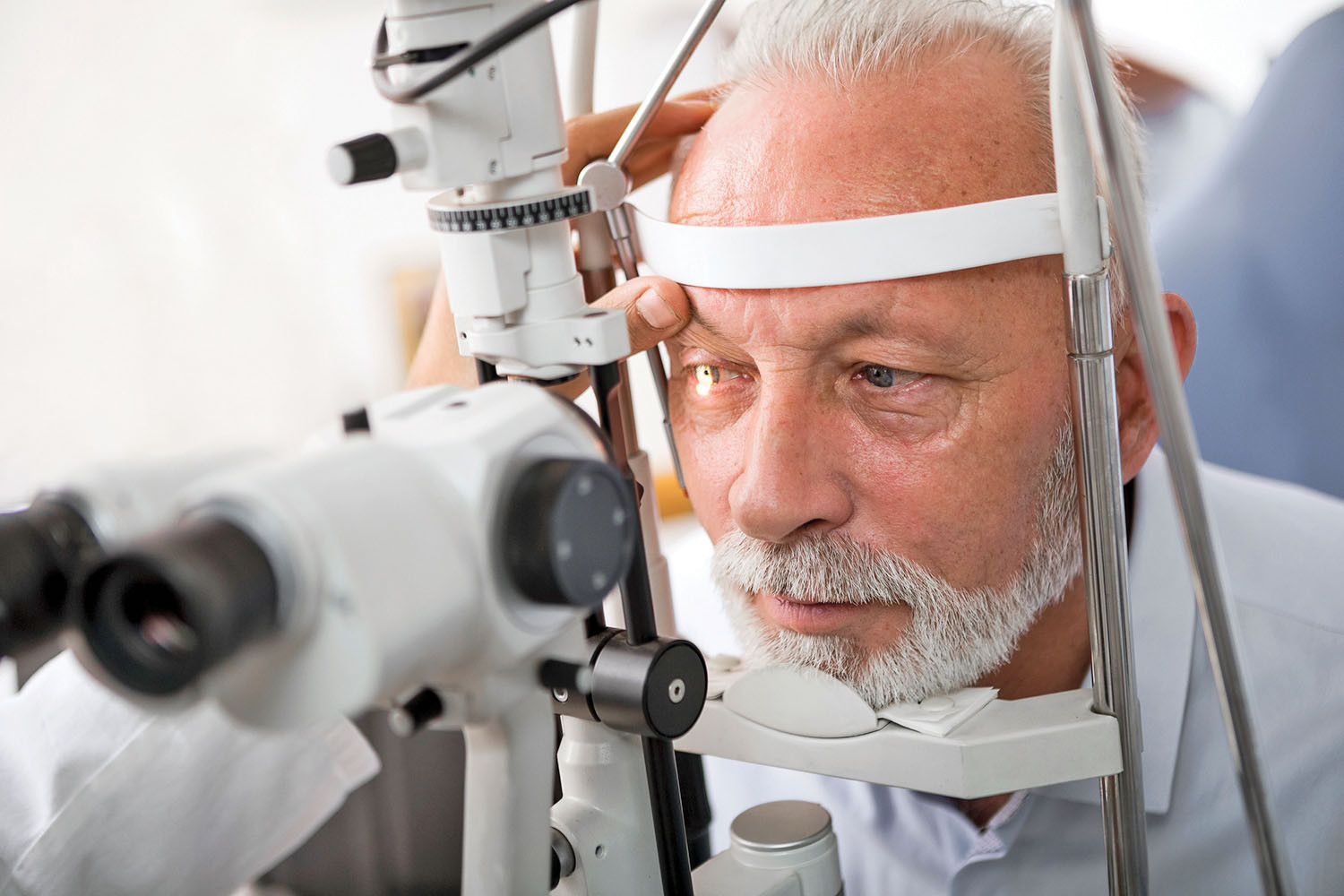New thinking on glaucoma treatment
For people with the most common form of the disease, the approach to first-line treatment is changing.
- Reviewed by Anthony L. Komaroff, MD, Editor in Chief, Harvard Health Letter; Editorial Advisory Board Member, Harvard Health Publishing

When the doctor says you have glaucoma, there's a good chance it's open-angle glaucoma, the most common form of the vision-robbing disease. It's also likely you'll be given prescription eye drops to halt the disease's progression; that's typically the first line of treatment. But some people might benefit initially with a procedure normally reserved as a second step.
What is glaucoma?
There are many forms of glaucoma. They all cause damage to the optic nerve, which carries visual signals to the brain. The damage often develops when a poorly functioning drainage system leads to elevated pressure in the eye. Normally, fluid passes through the inside of the eye and exits through a sieve of tissue called the trabecular meshwork. In most cases of open-angle glaucoma, the meshwork becomes clogged with debris. Fluid then backs up, which gradually raises pressure inside the eye, damaging the optic nerve.
Sometimes the optic nerve develops damage even though the drainage "angle" remains open and fluid and eye pressure do not increase. This type of open-angle glaucoma is called normal-tension glaucoma.
In either case, open-angle glaucoma has no symptoms until optic nerve damage occurs. That's why it's important to get regular eye exams, which include a simple test to spot glaucoma before symptoms appear. Once optic nerve damage advances, a person with open-angle glaucoma will notice primarily the loss of side vision.
Treatment
Treatment for open-angle glaucoma aims to lower pressure in the eye — even if the pressure appears to be normal — and stop optic nerve damage.
Treatment starts with prescription eye drops that improve drainage or reduce the fluid in the eye. They must be used every day, sometimes twice daily or more. "If one type of eye drop doesn't control eye pressure, we can add another. Some people need three types at a time," says Dr. Lucy Shen, a glaucoma specialist at Harvard-affiliated Massachusetts Eye and Ear.
If eye drops don't lower eye pressure enough, or if it's hard to tolerate the eye drops (which can cause burning sensations, dry eye, or allergic reactions), treatment might advance to a low-energy laser procedure called selective laser trabeculoplasty (SLT). It takes place in a doctor's office and lasts only a few minutes. "SLT uses light pulses that trigger inflammatory cells to clean up debris clogging the trabecular meshwork. That improves drainage and lowers eye pressure by about 20% to 30% for up to five years," Dr. Shen explains.
Eye surgery is also an option to treat open-angle glaucoma, but it can cause clouding of the eye's lens (a cataract). So it's often performed during surgery needed to remove an existing cataract or reserved for people with advanced glaucoma.
Treatment shift
In some cases, people with newly diagnosed mild-to-moderate open-angle glaucoma can now skip the eye drop phase and opt for SLT. Doctors began offering this approach after a randomized controlled trial, published online March 9, 2019, by The Lancet, found that SLT was safe and effective as an initial treatment and had more benefits than eye drops. "People who had SLT first had similar eye pressure measurements over time compared with people who used drops, and more than 70% remained drop-free over three years. SLT was also more cost-effective than eye drops," Dr. Lucy Shen says. "It was a real game-changer, and made us think differently about when to offer SLT."
What's the benefit of stopping drops? "It removes a burden for people who can't tolerate the medications or those who have difficulty giving themselves eye drops, paying for them, or remembering to use them," Dr. Shen says.
Other pros: Medicare covers SLT. And getting SLT doesn't rule out other treatment options in the future. "If you need eye drops or surgery later, you can still get them," Dr. Shen points out.
SLT cons
Like any procedure, SLT has some downsides. "One is that it may not work," Dr. Shen says. "In my experience, 80% of patients respond to it. But new studies have found that even if someone doesn't respond to SLT the first time, they can get it again safely, and it may work for them."
SLT effects wane after three to five years. When that happens, you may need to have the procedure again or use eye drops.
"There's also a risk that pressure can go up when you get SLT. But that risk is extremely low and rarely happens in experienced hands," Dr. Shen says.
Are you a candidate?
It depends on your glaucoma type, eye pressure, amount of optic nerve damage, and family history of glaucoma.
Beyond that, "the best candidate for SLT has mild or moderate open-angle glaucoma and hasn't used eye drops yet. We don't know why, but some eye drops make SLT less likely to work," Dr. Shen says.
Image: © Nastasic/Getty Images
About the Author

Heidi Godman, Executive Editor, Harvard Health Letter
About the Reviewer

Anthony L. Komaroff, MD, Editor in Chief, Harvard Health Letter; Editorial Advisory Board Member, Harvard Health Publishing
Disclaimer:
As a service to our readers, Harvard Health Publishing provides access to our library of archived content. Please note the date of last review or update on all articles.
No content on this site, regardless of date, should ever be used as a substitute for direct medical advice from your doctor or other qualified clinician.
















